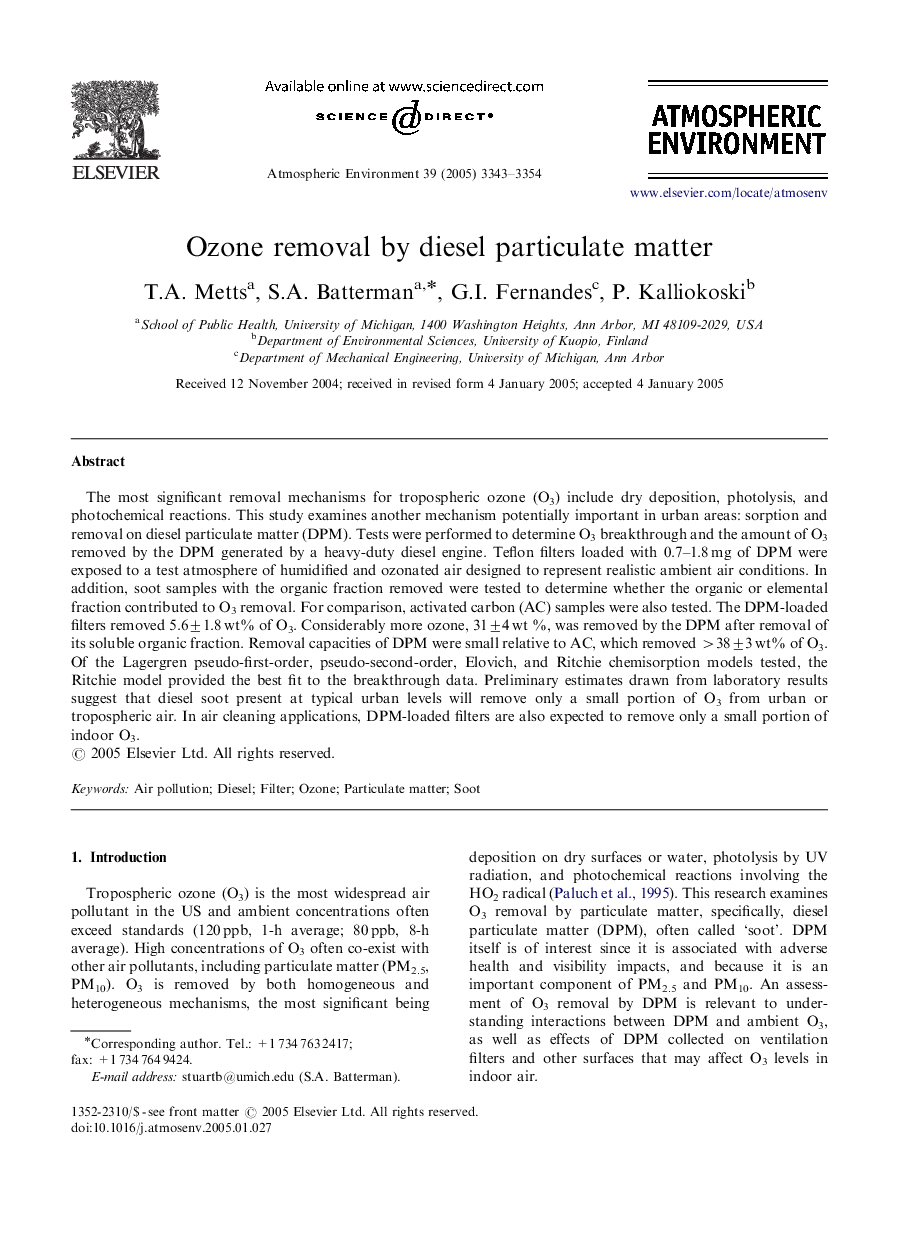| کد مقاله | کد نشریه | سال انتشار | مقاله انگلیسی | نسخه تمام متن |
|---|---|---|---|---|
| 4444162 | 1311226 | 2005 | 12 صفحه PDF | دانلود رایگان |
عنوان انگلیسی مقاله ISI
Ozone removal by diesel particulate matter
دانلود مقاله + سفارش ترجمه
دانلود مقاله ISI انگلیسی
رایگان برای ایرانیان
کلمات کلیدی
موضوعات مرتبط
مهندسی و علوم پایه
علوم زمین و سیارات
علم هواشناسی
پیش نمایش صفحه اول مقاله

چکیده انگلیسی
The most significant removal mechanisms for tropospheric ozone (O3) include dry deposition, photolysis, and photochemical reactions. This study examines another mechanism potentially important in urban areas: sorption and removal on diesel particulate matter (DPM). Tests were performed to determine O3 breakthrough and the amount of O3 removed by the DPM generated by a heavy-duty diesel engine. Teflon filters loaded with 0.7-1.8 mg of DPM were exposed to a test atmosphere of humidified and ozonated air designed to represent realistic ambient air conditions. In addition, soot samples with the organic fraction removed were tested to determine whether the organic or elemental fraction contributed to O3 removal. For comparison, activated carbon (AC) samples were also tested. The DPM-loaded filters removed 5.6±1.8 wt% of O3. Considerably more ozone, 31±4 wt %, was removed by the DPM after removal of its soluble organic fraction. Removal capacities of DPM were small relative to AC, which removed >38±3 wt% of O3. Of the Lagergren pseudo-first-order, pseudo-second-order, Elovich, and Ritchie chemisorption models tested, the Ritchie model provided the best fit to the breakthrough data. Preliminary estimates drawn from laboratory results suggest that diesel soot present at typical urban levels will remove only a small portion of O3 from urban or tropospheric air. In air cleaning applications, DPM-loaded filters are also expected to remove only a small portion of indoor O3.
ناشر
Database: Elsevier - ScienceDirect (ساینس دایرکت)
Journal: Atmospheric Environment - Volume 39, Issue 18, June 2005, Pages 3343-3354
Journal: Atmospheric Environment - Volume 39, Issue 18, June 2005, Pages 3343-3354
نویسندگان
T.A. Metts, S.A. Batterman, G.I. Fernandes, P. Kalliokoski,